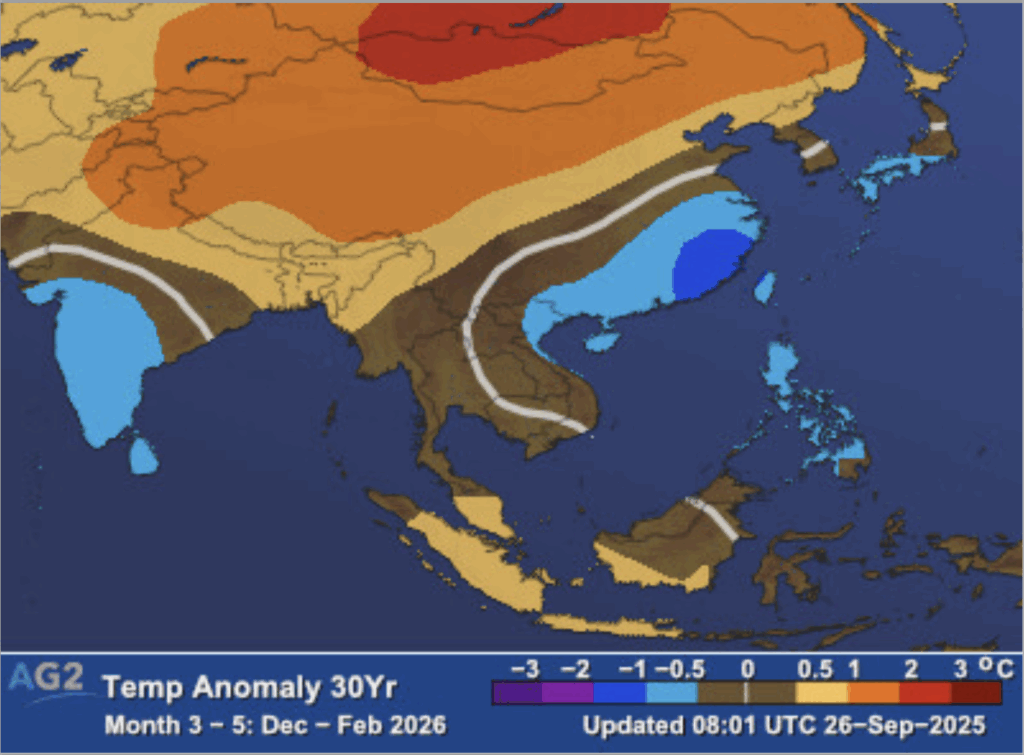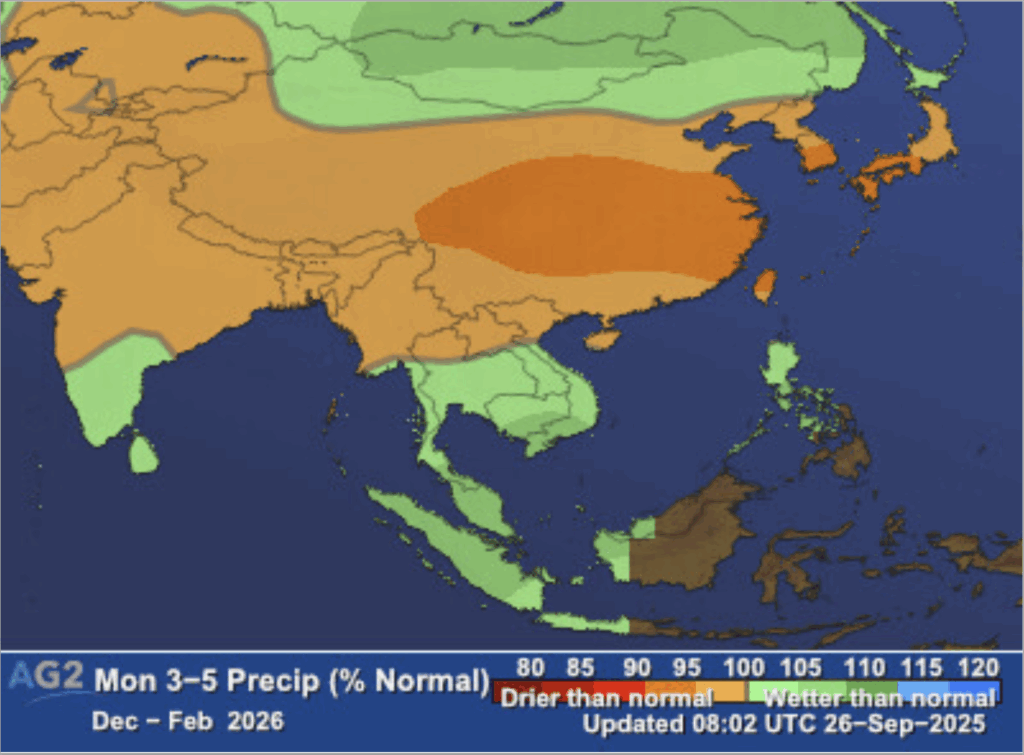Publication date: Oct 16, 2025 Powering Through Winter: Japan’s 2025-26 Winter Weather Forecast
Powering Through Winter: Japan’s 2025-26 Winter Weather Forecast
Japan registered the hottest summer in history this year, surpassing the previous records in 2023 and 2024 (Nikkei). As Japan transitions from an eventful 2025 summer, we look ahead to winter and explore what the coming cold season may bring for the nation’s electricity markets. In this article, we would like to focus on the regional differences in Japan through the latest weather forecast provided by Atmospheric G2 (AG2), which suggests a distinct north-south contrast for this winter. This article was co-produced by Shulman Advisory and AG2.
According to AG2’s temperature anomaly map for Dec 2025 – Feb 2026 (Figure 1 below) , the northern portion of the country – particularly Hokkaido and parts of Tohoku – is shaded near neutral to slightly orange tones, indicating near-normal to marginally warmer-than-normal temperatures. In contrast, the central and southern regions – including Kanto, Chubu, Kansai, Shikoku, and Kyushu – appear in light blue shading, signifying cooler-than-normal conditions for the core of winter. This setup suggests that while northern Japan experiences relatively stable and mild anomalies, much of central and southern Japan could see a notably colder winter than recent years, with frequent cold outbreaks and below-normal temperatures, particularly in January and February. This forecast shows similarity to winter 2024-2025 (Dec – Feb), where the northern regions recorded relatively warmer temperatures, while western Japan registered a colder winter (JMA).

The precipitation anomaly map for the same period (December–February) (Figure 2 below) depicts Japan primarily in neutral to slightly below-normal precipitation tones (around 90–100% of normal). This implies near-average to somewhat drier conditions overall, especially across central and southern Japan. However, the Sea of Japan side – exposed to cold northwesterly winds – is likely to experience localized snow enhancement, as cold continental air crosses the still-warm coastal waters, and thicker cloud cover may affect solar power generation in these regions. Northern Japan and Hokkaido appear near normal in precipitation, suggesting typical winter storm activity but not an overly wet or snowy season.

During a typical winter in Japan, heating demand rises from early morning hours, shifting the daily peak load earlier compared with summer, when demand typically peaks in the afternoon. In the Tokyo area, for example, the 2025 summer peak occurred most between 13:00 and 15:00 during August’s hottest period, reaching a seasonal high of 57.54 GW on August 6. In contrast, last winter’s peak demand occurred in the mornings, mostly between 8:00 and 10:00, hitting 44.69 GW on December 13 (TEPCO).
Regional differences also deserve attention. In Japan’s southern and central regions, which have mild winters but hot summers, electricity demand typically peaks in summer, while in the northern regions, winter demand surpasses summer levels due to heating needs (METI, METI). However, for this winter, AG2’s forecast points to colder conditions across the central and southern regions – the nation’s major demand centers – combined with thicker cloud cover along the Sea of Japan side, which could dampen solar generation. Together, these factors suggest a potentially tighter supply–demand balance this winter.
In fact, METI’s latest forecast projects increasing electricity demand and a tighter supply for the coming winter compared to the previous winter. While supply capacity is expected to decrease in all the areas except Okinawa, partly because the number of thermal power plants being decommissioned or suspended will surpass those newly built, electricity demand is projected to rise in 7 regions (METI). In the winter of 2024-2025, the demand and supply balance was relatively stable as some new power plants came online, and nuclear plants were reactivated, adding extra supply capacity. For this winter, while there are some new power plants planned to commence operations in the near future, only one additional power plant is expected to become operational this winter (January 2026) (METI).
As Japan heads into what could be a colder-than-normal winter for its central and southern regions, close attention to regional weather patterns will be essential for anticipating electricity demand and managing supply risks. AG2’s insights highlight how weather intelligence can inform energy planning and investment decisions amid shifting seasonal dynamics. We’ll continue monitoring conditions as winter progresses – join AG2’s Winter Outlook Webinar on November 5 for the latest updates and analysis. Contact us for more information or check out this link.
